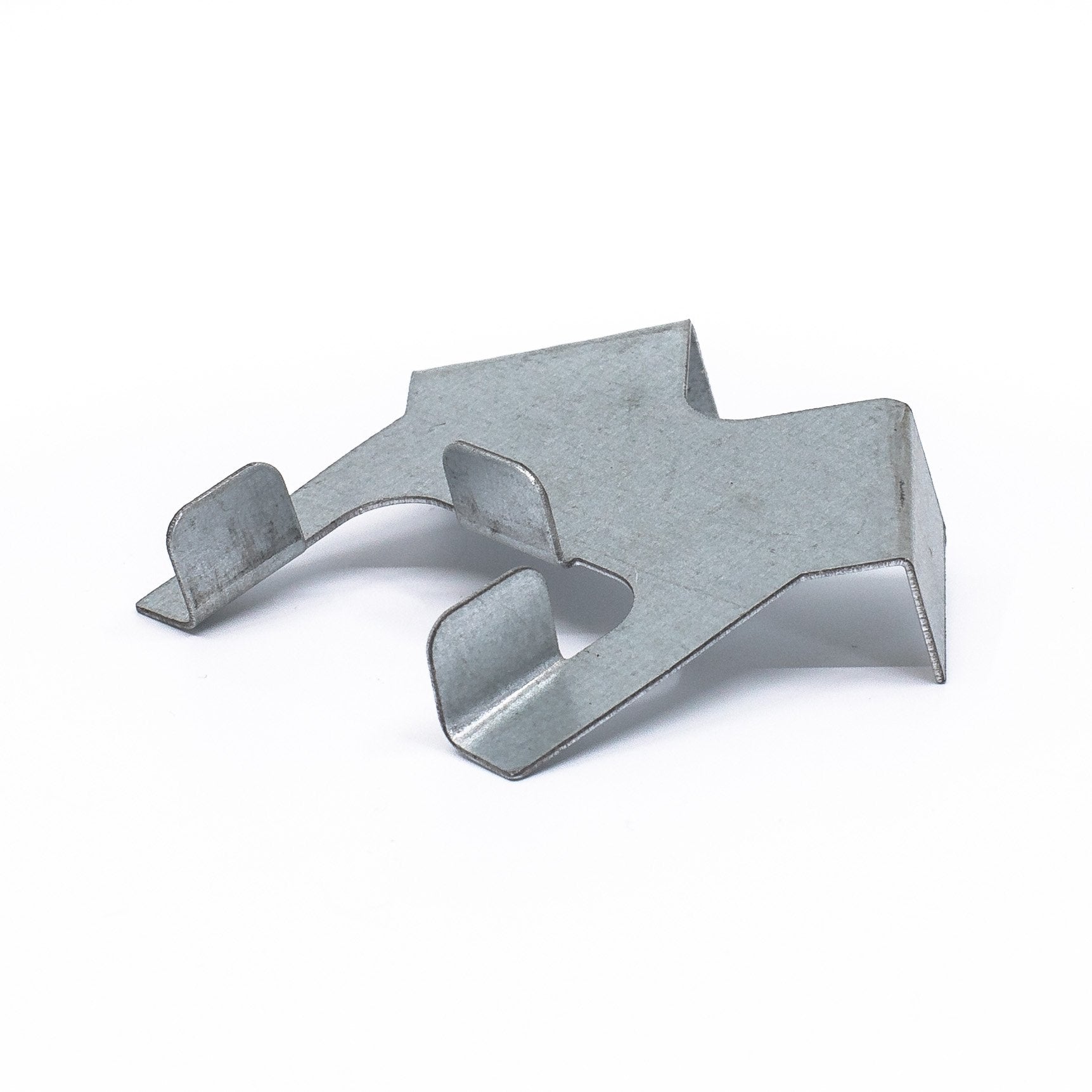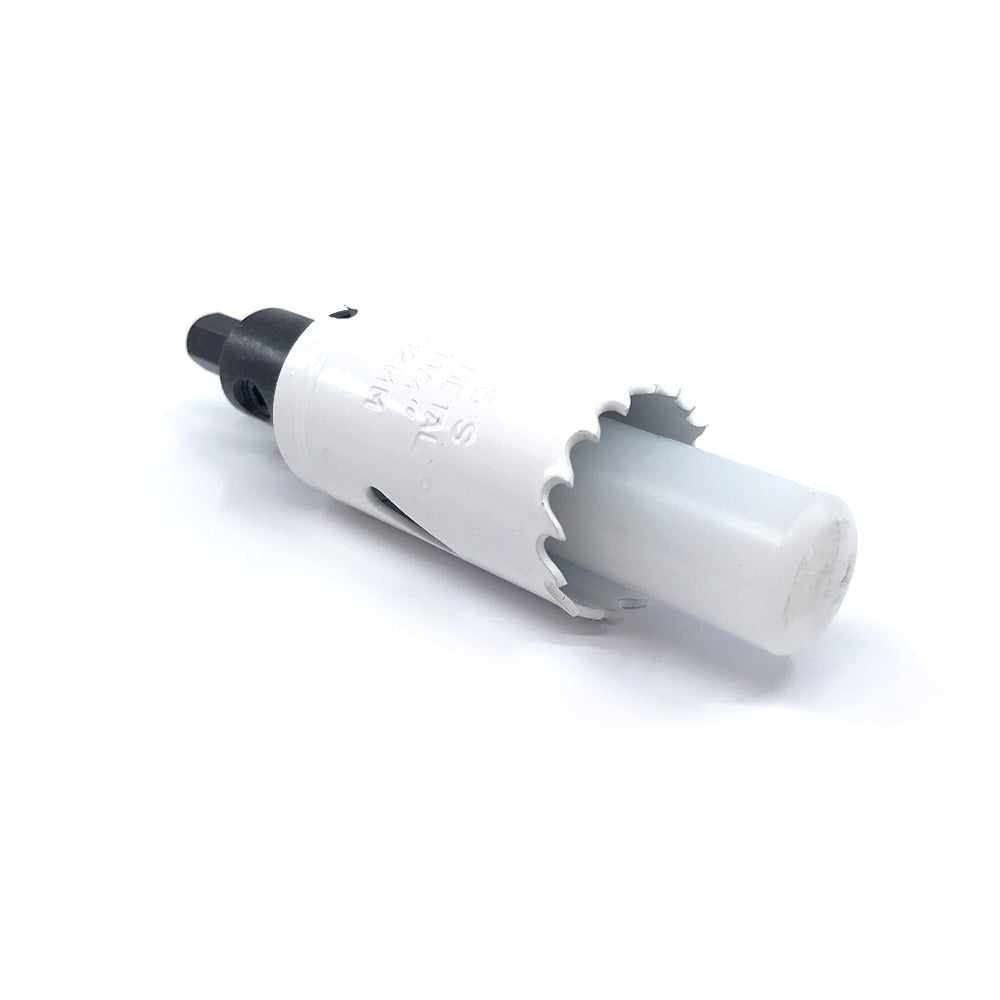Menu
Your cart is empty
Looks like you haven't added anything to your cart yet
PLEASE NOTE: 6x6 post saddles are currently on backorder. Please be advised orders with these items will be shipped upon restock.
LEDGER LOAD MAX – REINFORCED FROST FOOTINGS FOR HIGHER LOAD CAPACITIES
The Ledger Load Max is a heavy-duty Deck Foot Anchor designed for ledger-connected decks, frost footings, and other structures requiring superior load capacity. Featuring a 1-inch diameter auger with a 5-inch blade, this reinforced version provides enhanced stability and compression resistance.
The Ledger Load Max includes:
- 56" auger - 1" diameter shaft - 5" diameter blade
- Custom Ledger Load Fin
- Your choice of post saddle
See Load Data below and consult local building authorities to confirm suitability for your application.
Ensure compliance with local building codes before installation.
If unsure about your soil conditions, we highly recommend testing your soil before purchasing Deck Foot Anchor products. Click here to see our test kit.
The original Deck Foot Anchor has been a favorite solution since 2012 for floating decks. The new Ledger Deck Foot Anchor is our answer for light weight ledger connected residential decks or other structures that need to be frost resistant. Do not use for commercial, industrial or multi-family home applications.
The open ended Load Fin allows frozen soil to expand and move freely and distribute compression loads to the soil via the auger and helical blades.
The wide fin profile stabilizes the auger against lateral forces. It's a durable and affordable alternative to traditional engineered piles that are optimally designed for much heavier structures.
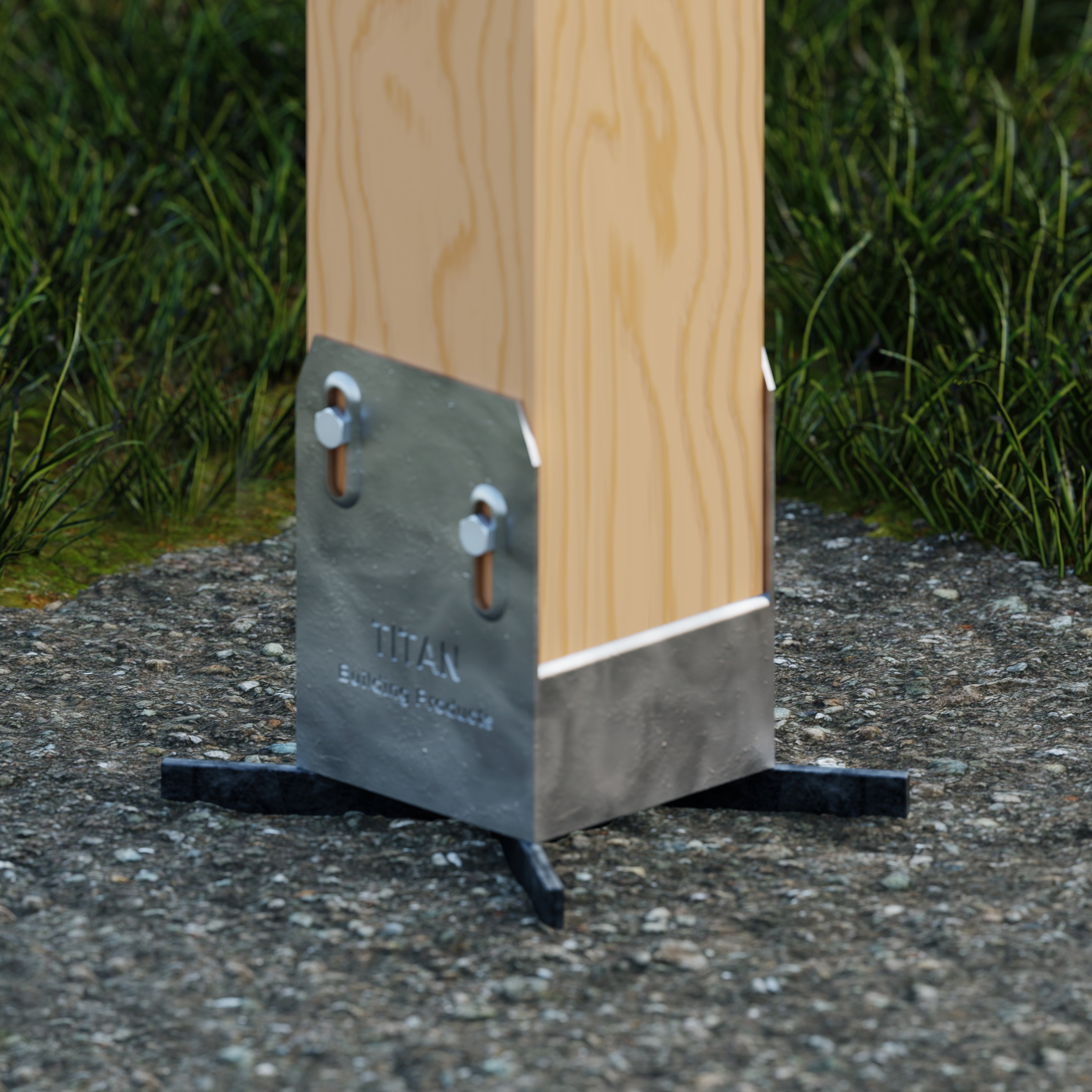
HOW IT WORKS
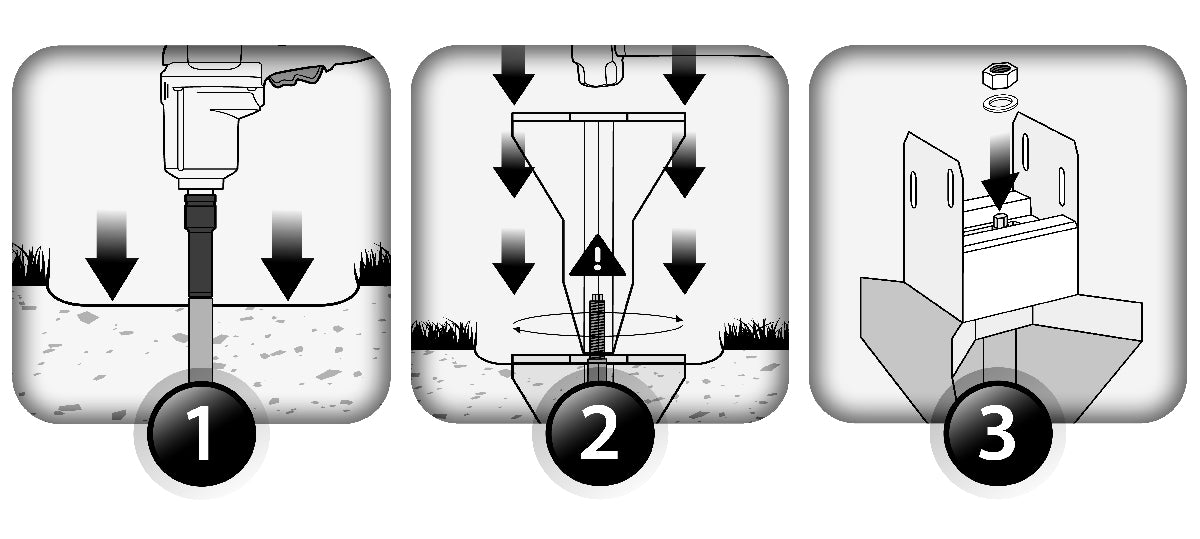
DRIVE
Using a lightweight handheld ½" electric impact wrench and a 12mm six point socket, drive the auger deep into the soil.
TIGHTEN
Drive the compression Load Fin over the auger and tighten the nut.
ATTACH
Adjust the post saddle in line with the beam. Tighten the upper nut to attach the saddle to the auger and Load Fin.
HERE IS HOW TO ORDER
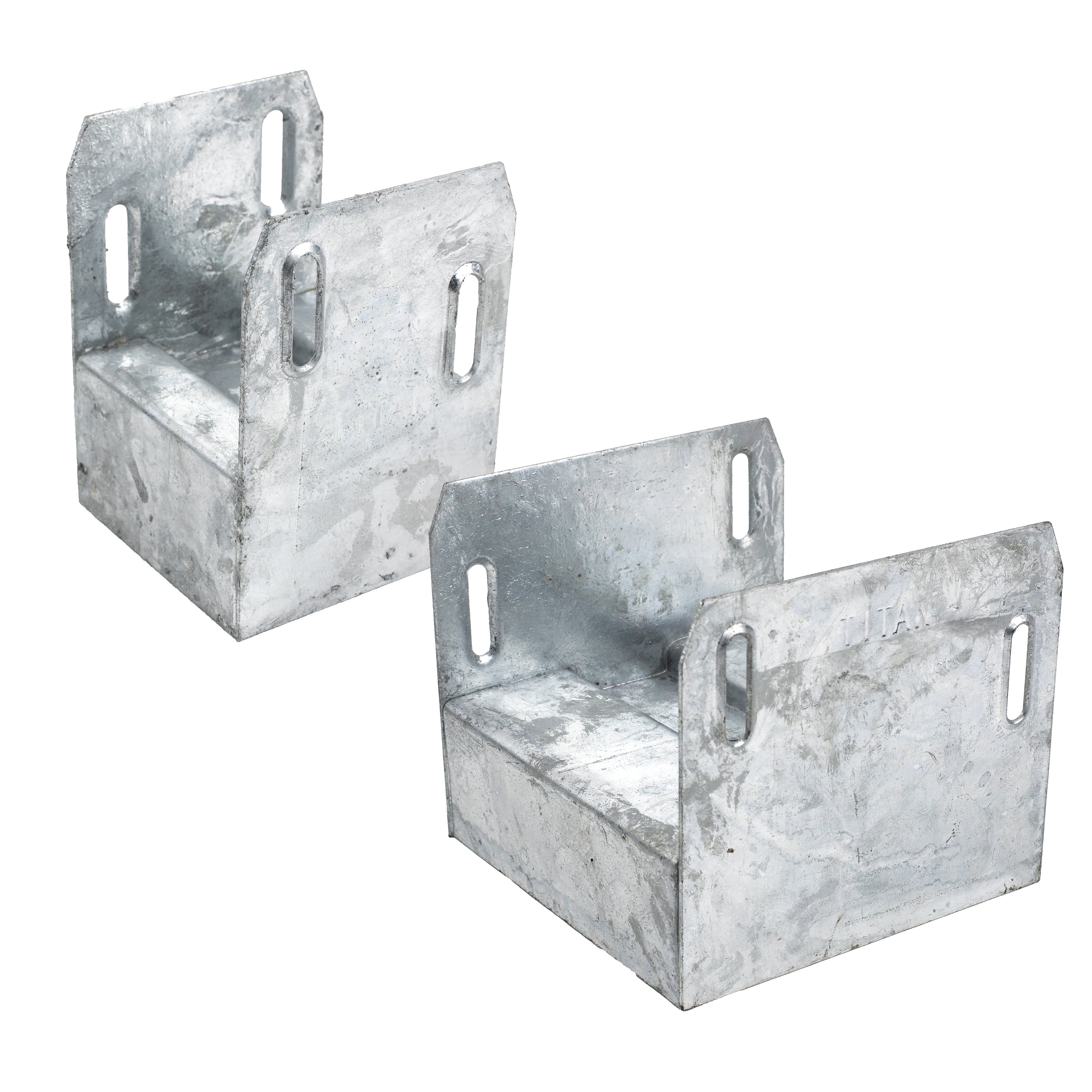
CHOOSE POST SADDLE
Available for 4X4 or 6X6 posts.
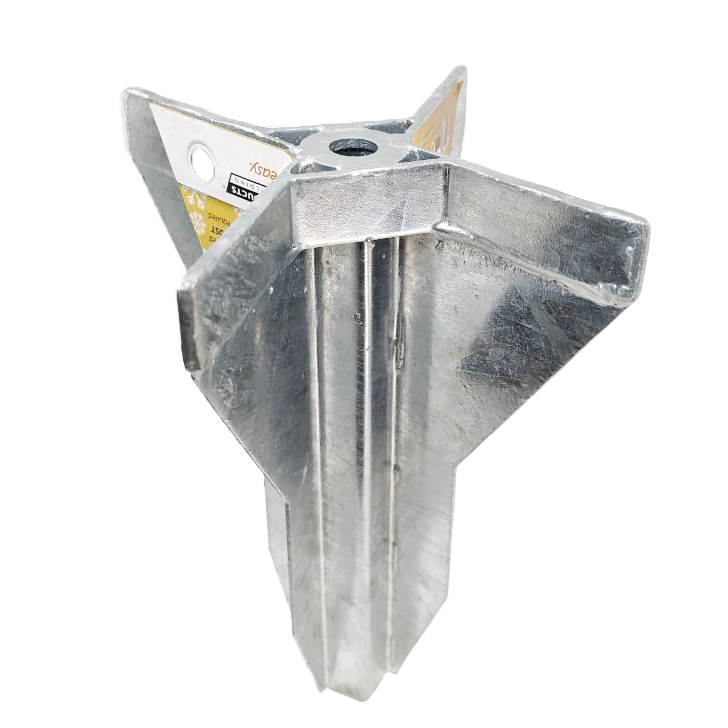
LOAD FIN
The compression Load Fin slides over the auger to distribute load from the post to the auger.
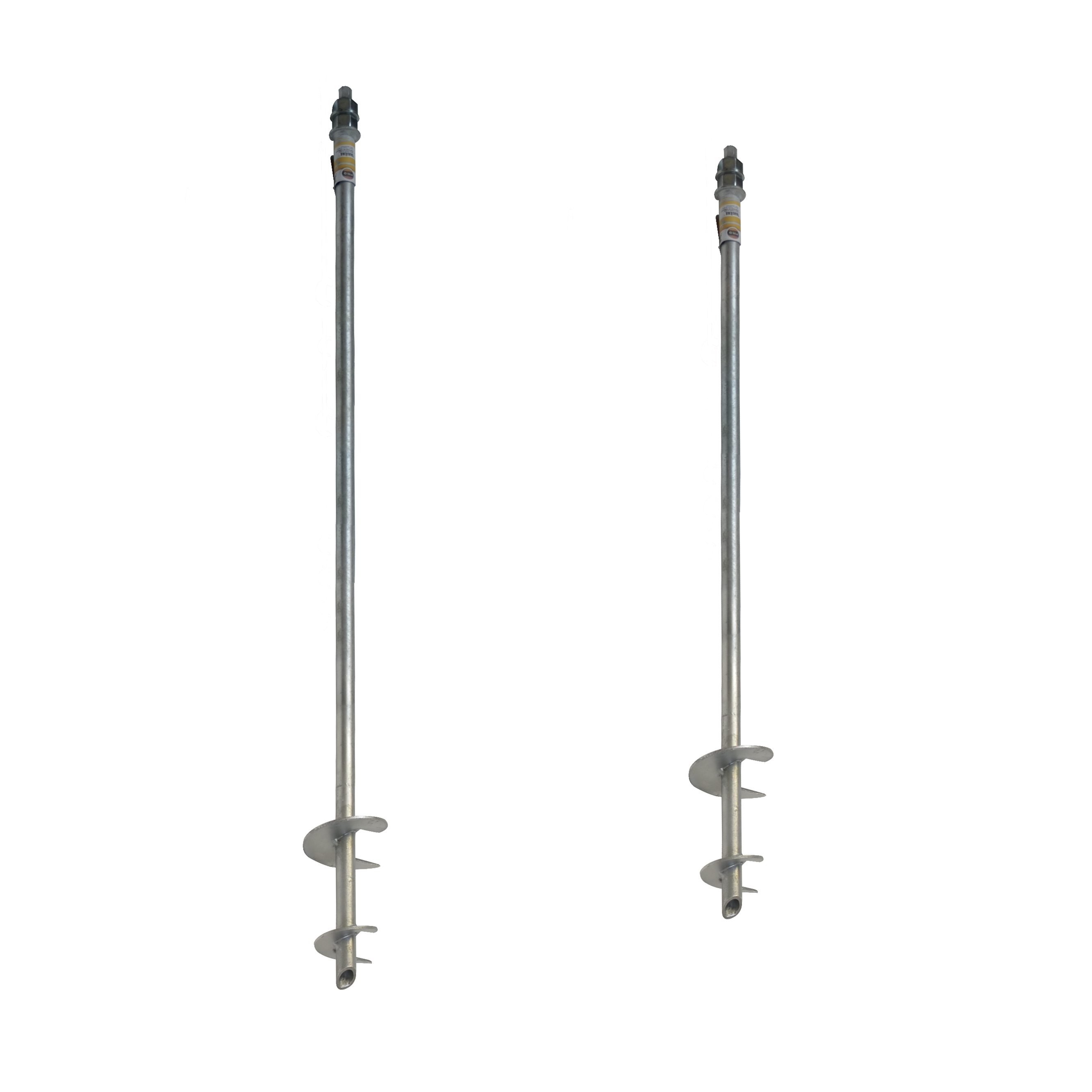
CHOOSE AUGER
Available in 3’ and 4’ lengths with 24” extensions to make 5’ and 6’ augers.
The Ledger Deck Foot Anchor uses an auger which drives into most soil types with the convenience of a hand held ½" impact wrench (18V or corded).
The compression Load Fin slides over the auger shaft and is embedded in the upper 12" of compacted soil using a sledge hammer or a modified 4x4 post. The edges of the Load Fin provide a surface for the Post Saddle to rest and distribute compression load to the auger and the blades.
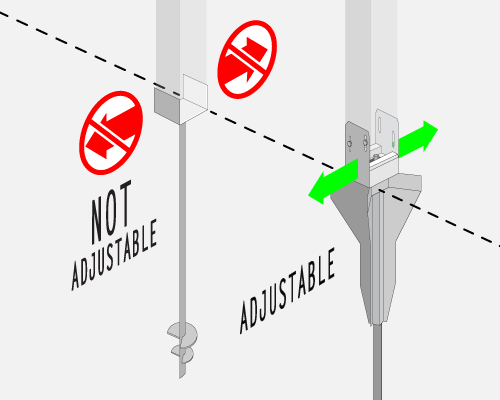
Helical piles are a time-tested solution for all kinds of structures like houses, commercial buildings, bridges and more. They support very heavy loads. But they usually come with a heavy price tag too.
And if they are not installed precisely, it is difficult to adjust the post saddle to align with an overhead beam. Sometimes it's impossible and a site welded bracket has to be used.
But more importantly, in practical terms, you may be paying for way more than what common light weight residential structures need. The Ledger Deck Foot Anchor is an attempt to solve that dilemma.
The Load Fin is more than 6" at it's widest point, giving the otherwise narrow auger tube massive lateral resistance in the soil akin to a much larger diameter helical pile.
The auger can still be installed easily in most soil types with the convenience of a handheld ½" drive impact wrench (18v cordless or corded).
The Load Fin allows a 4x4 or 6x6 Post Saddle to adjust up to 2” to ensure multiple saddles are easily aligned under a common carrier beam –something that is not always easy – or possible - to do with heavier style piles.
Adjustability of the Post Saddle is what really differentiates this solution from the heavy duty engineered helical piles.
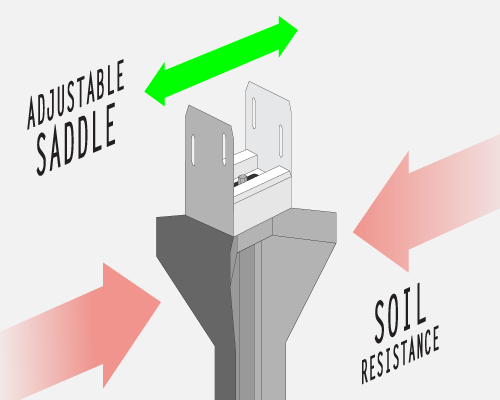

WILL AN AUGER WORK IN MY SOIL?
Some soil is not well suited for augers. The soil may be full of rocks, roots or other obstructions, or frozen. So you have to do some due diligence first to know if your soil is suited for this kind of solution.
The Ledger Deck Foot Anchor™ can be easily retracted and moved to a new location if you are unable to get past an obstruction.
If you're unsure about your soil conditions, we recommend using our Deck Foot Anchor - Test Kit for accurate results. This kit will help you assess soil composition and confirm compatibility with our augers before you buy, giving you confidence in your foundation choice.
HOW MANY FOOTINGS DO I NEED
As a rule of thumb, in clay soil with a 50 psf design load, each footing should support a tributary area of no more than 40 square feet to stay within safe load limits. This ensures proper weight distribution and minimizes the risk of settlement.
If you have any doubts or questions about this, you should consult a local structural engineer to be sure you have more load capacity than what you would ever intend to load your structure to.
But the main benefit of this solution is that it can be fully resistant to frost if set deep enough into the soil. And the post saddles are easily adjustable to align with an overhead beam. Just use enough footings to easily carry the expected loads. More is better than too few.

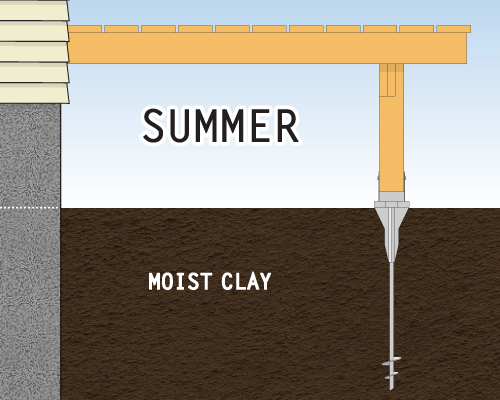
HOW DOES FROST AFFECT THE ANCHOR?
If the blades of the auger are driven below the frost line, the entire footing remains stationary even when moisture laden soil in the frozen expands upwards. That's because there is no flat cap on the Load Fin which differs from the Floating Deck Foot Anchor.
The open compression Load Fin allows a clear path for frozen soil to expand upward if it must while the helical blades still remain fixed in the soil below the frost line.
COMPRESSION LOAD
In sandy soil, the maximum compression load is 8,300 lbs, with a suggested working load of 5,850 lbs. In clay soil, the maximum load is 4,000 lbs, with a suggested working load of 2,500 lbs.
These values account for natural variations in soil conditions.
To avoid settlement, design your structure so that each footing carries a load within these limits. For clay soil, each footing should support between 1,500-2,500 lbs for safety. For a 50 psf design load, this means a loading zone of roughly 5' square to 6'-6" square per footing.
These figures cover typical soil conditions in North America. Ensure sufficient footings for added capacity, and consult a professional engineer if unsure about load calculations.

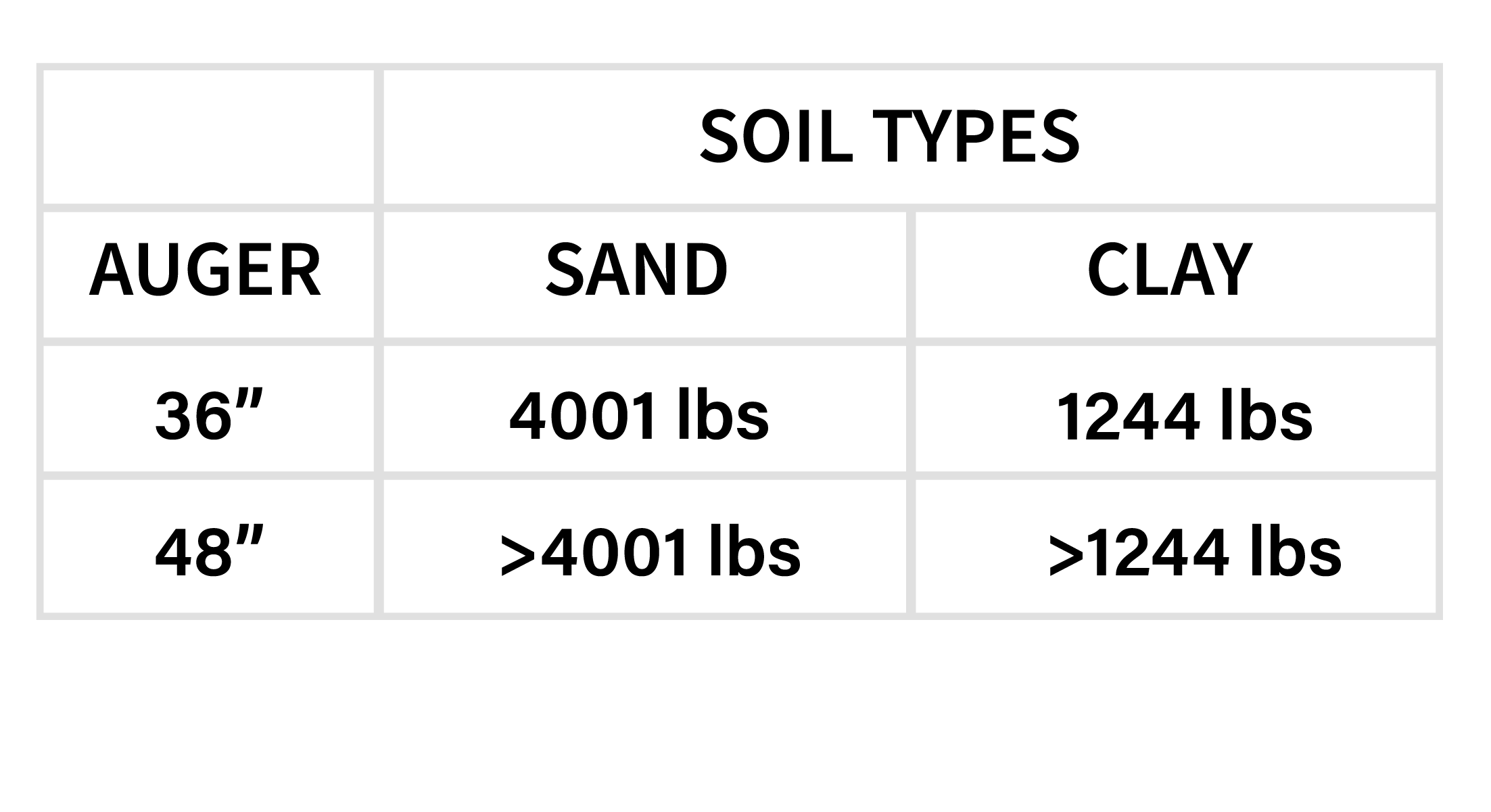
UPLIFT
Uplift forces are not as important on a ledger connected deck as they would be for a floating deck that might be more vulnerable to high winds.
A ledger connected deck is secured to the house and provides an additional degree of security in this respect.
However, the uplift data in the table shows the force required to pull the auger from the soil in each soil type depending on the length of the auger. Longer augers offer more uplift resistance because there is more soil above it.
DIMENSIONS






USE OUR IMPACT SOCKETS
Our 12mm high impact six point socket is designed to grip the hexagon drive head without stripping no matter the load.
This tiny investment can save headaches on the job site. If you use a low quality twelve point socket that does not fit as well, you are more likely to strip the drive head while under maximum load.
PRODUCT INSTALLATION GUIDES

Deck Foot Anchor - Ledger Instructions
Grab a copy of our installation guide and use it to help plan your project.
WARNING: Your experience with the Deck Foot Anchor is entirely dependent on your soil type. Rocks or roots or a weak impact wrench can prevent the auger from driving fully into the soil and an improperly sized socket can strip the driver head. Continuous torque for an extended period of time on the auger, once it has been stopped by a rock or immobile obstruction, can destroy the auger. The post saddles do not provide any significant lateral load resistance and should be used for compression load applications only.
- Choosing a selection results in a full page refresh.













